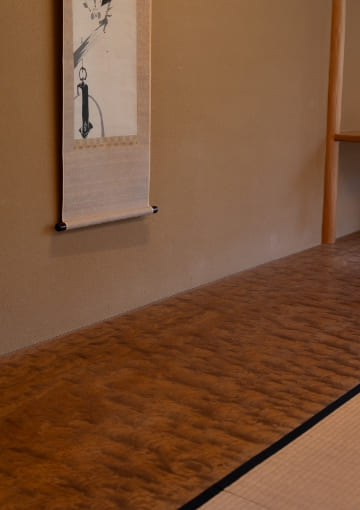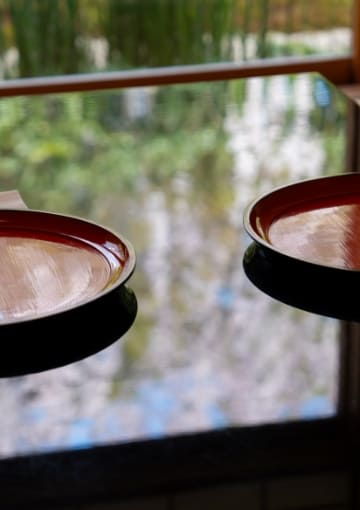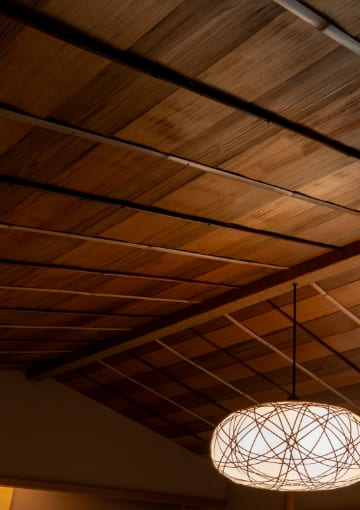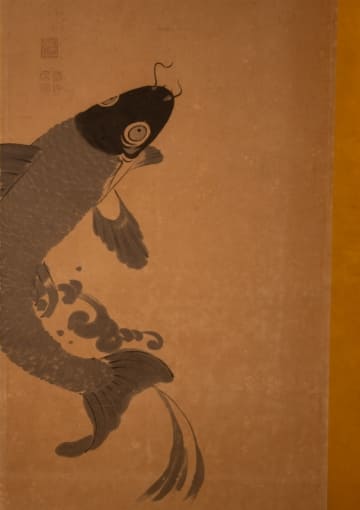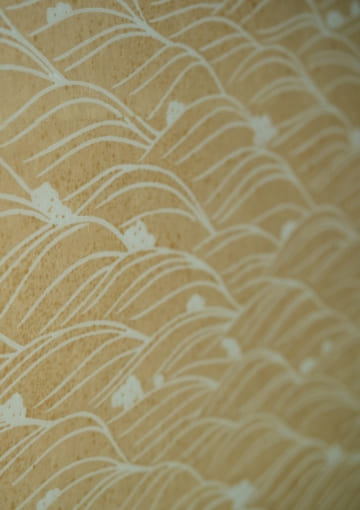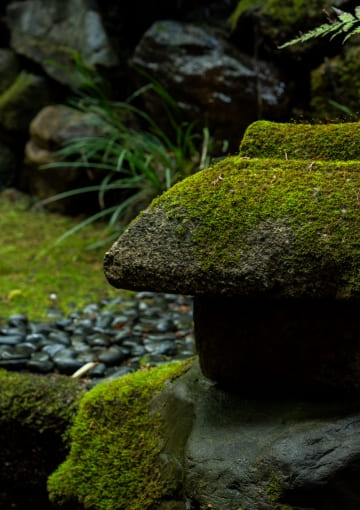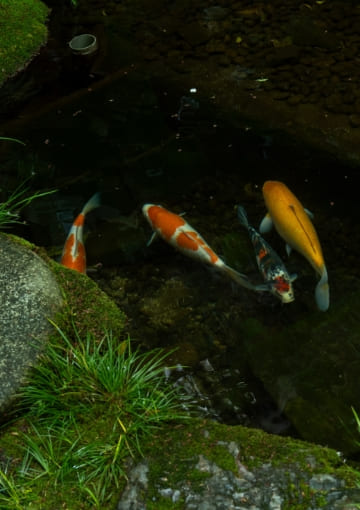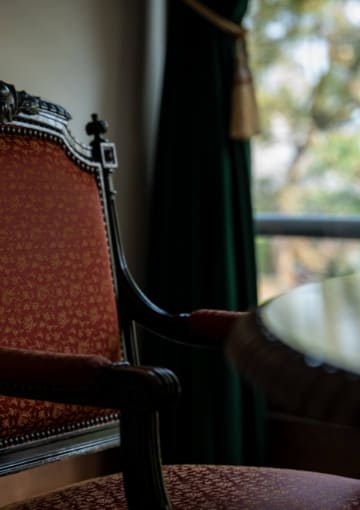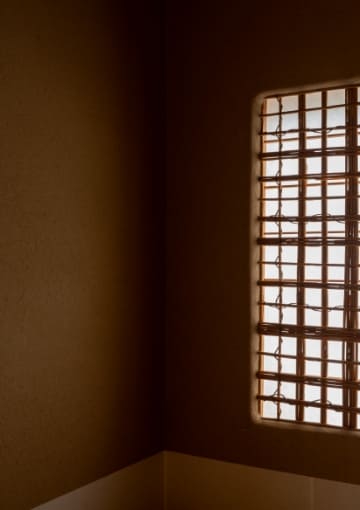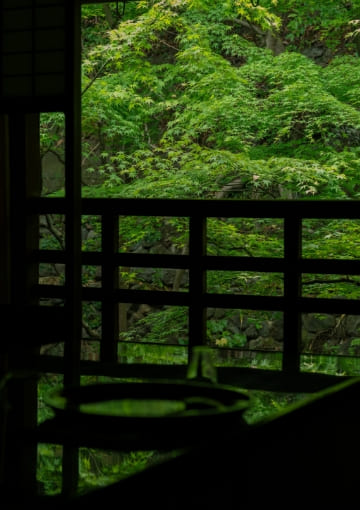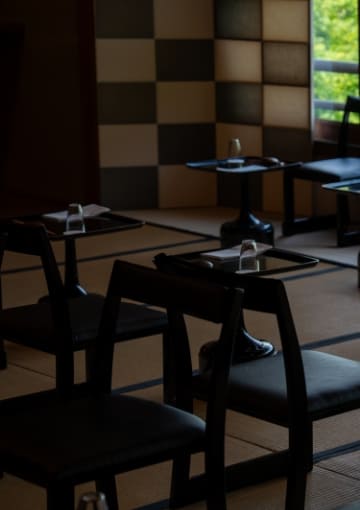松の間 MATSUNOMA 7
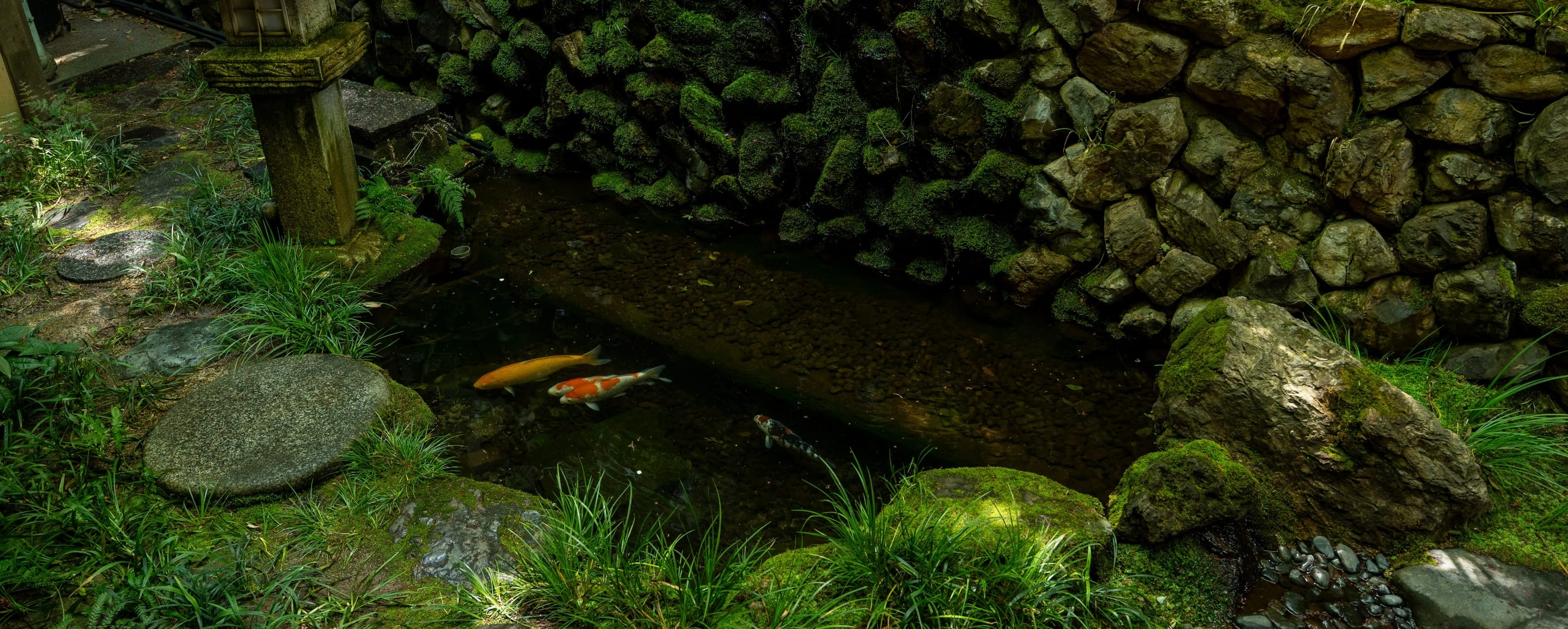
隅々に残された、
江戸時代末期の面影。
悠久の自然と同様に、時を重ねて受け継がれてきたものには、人の心を動かす力があります。松の間は、1850年代に建てられた母屋にある一室。幾度か改修しながらも、火鉢を使っていた頃に黒く煤けた壁や天井はあえてそのままに。窓硝子は大正~昭和初期のもので、当時は一枚ずつ手作りだったため、わずかに歪みがあり、庭の眺めまでどこか懐かしい心地にしてくれます。
Echoes of the late Edo period can be felt in every corner
As with nature immemorial, items passed through the hands of time hold the power to move hearts. Matsu-no-ma (literally the ‘pine room’) is a room in Kikunoi’s main building, which was built during the 1850s. Though having been renovated several times, the walls and ceilings remain untouched; blackened by the use of hibachi braziers. The glass in the windows dates back to the Taisho and early Showa periods. Glass was handmade piece by piece in those days, and though slightly warped they only add to the nostalgic feel guests have when viewing the garden.
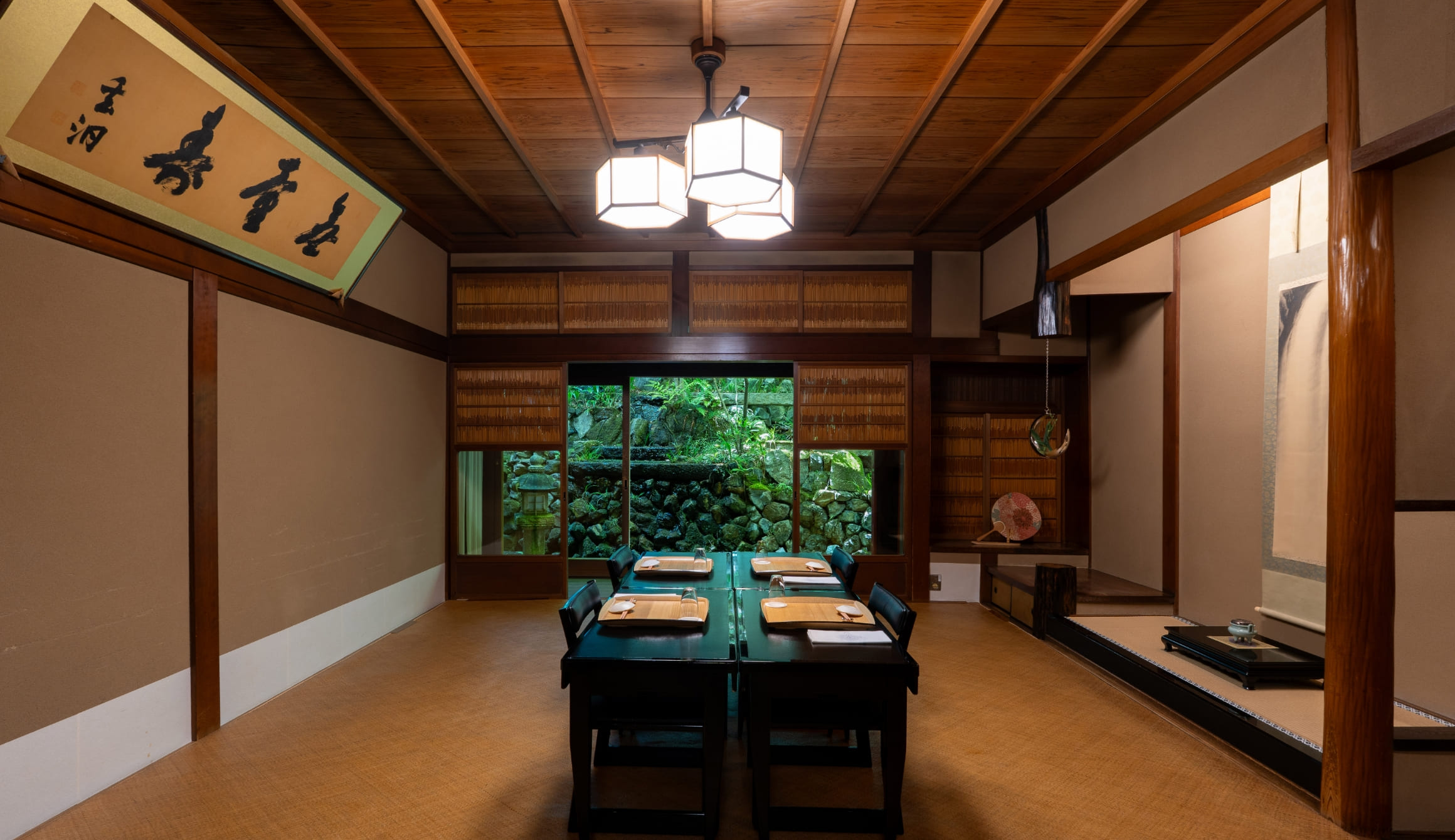
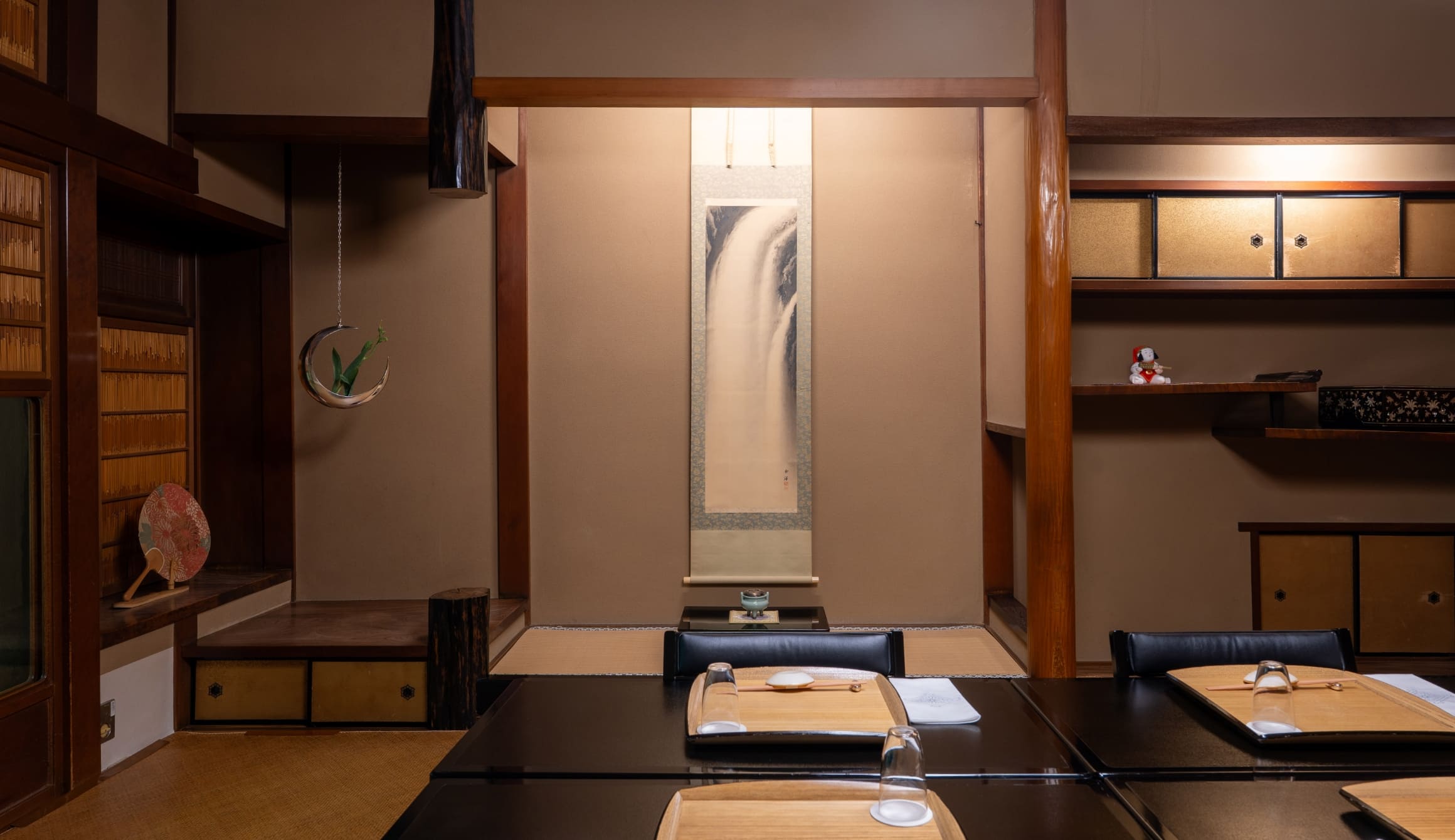
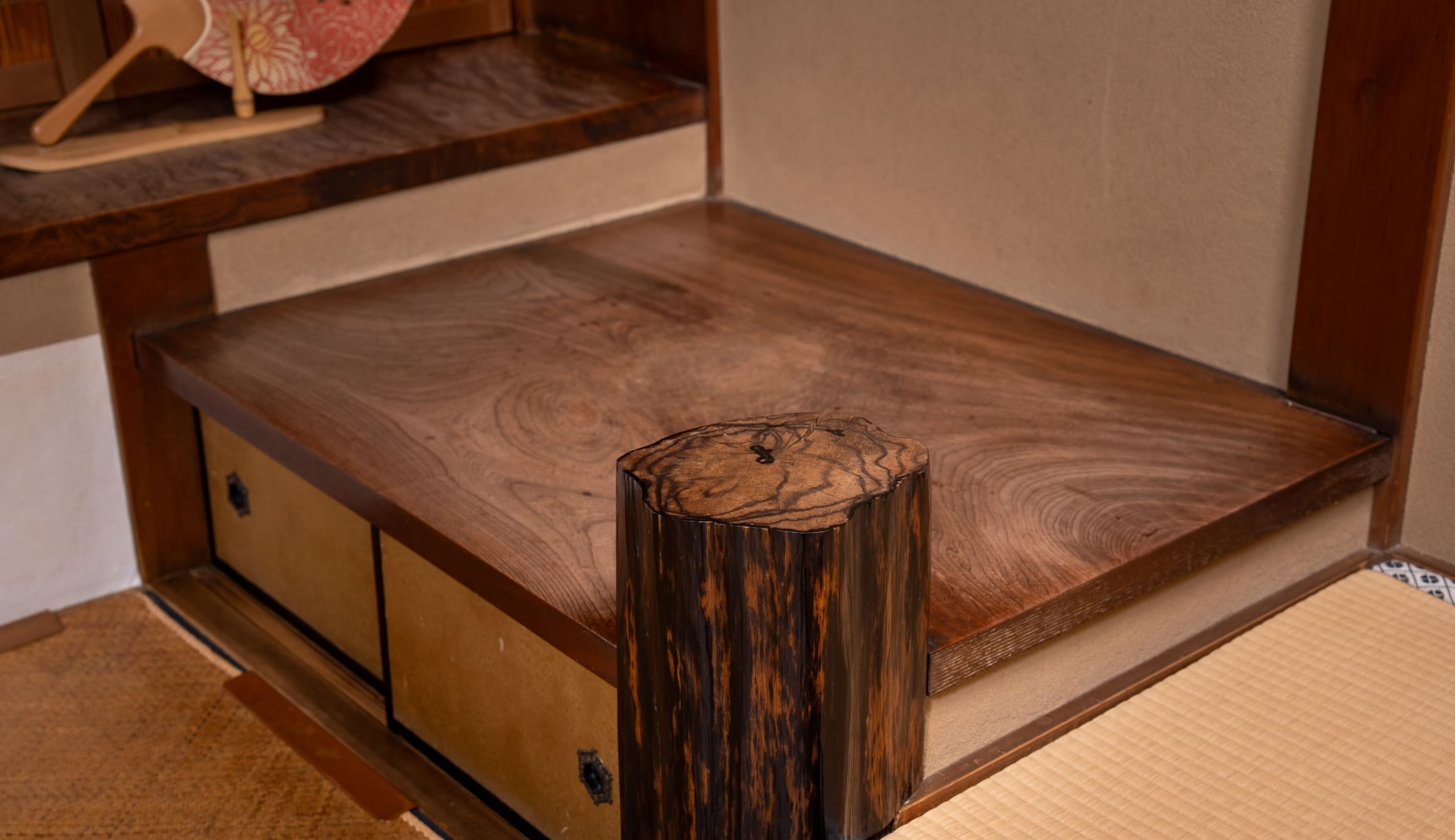
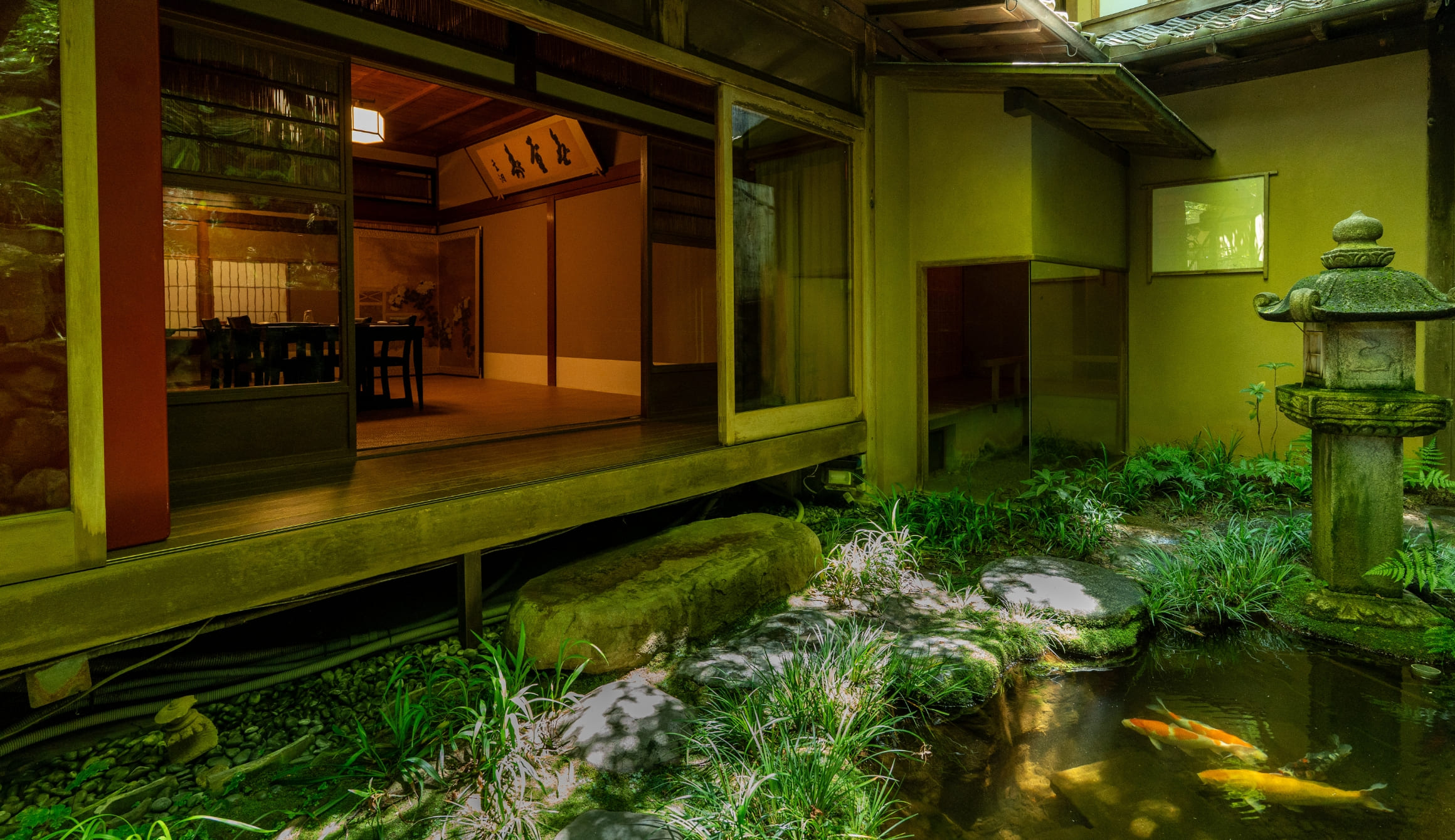
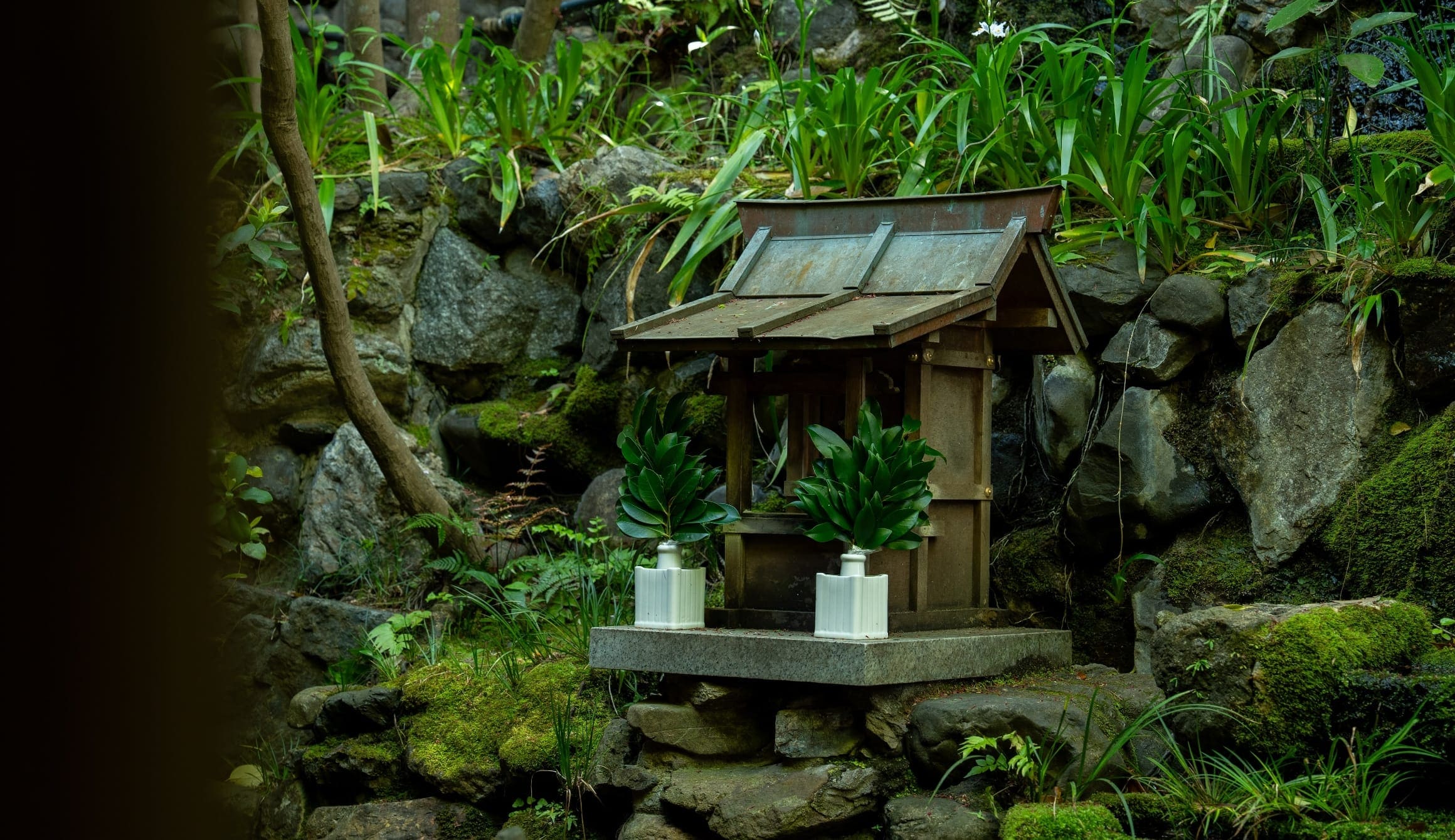
Details
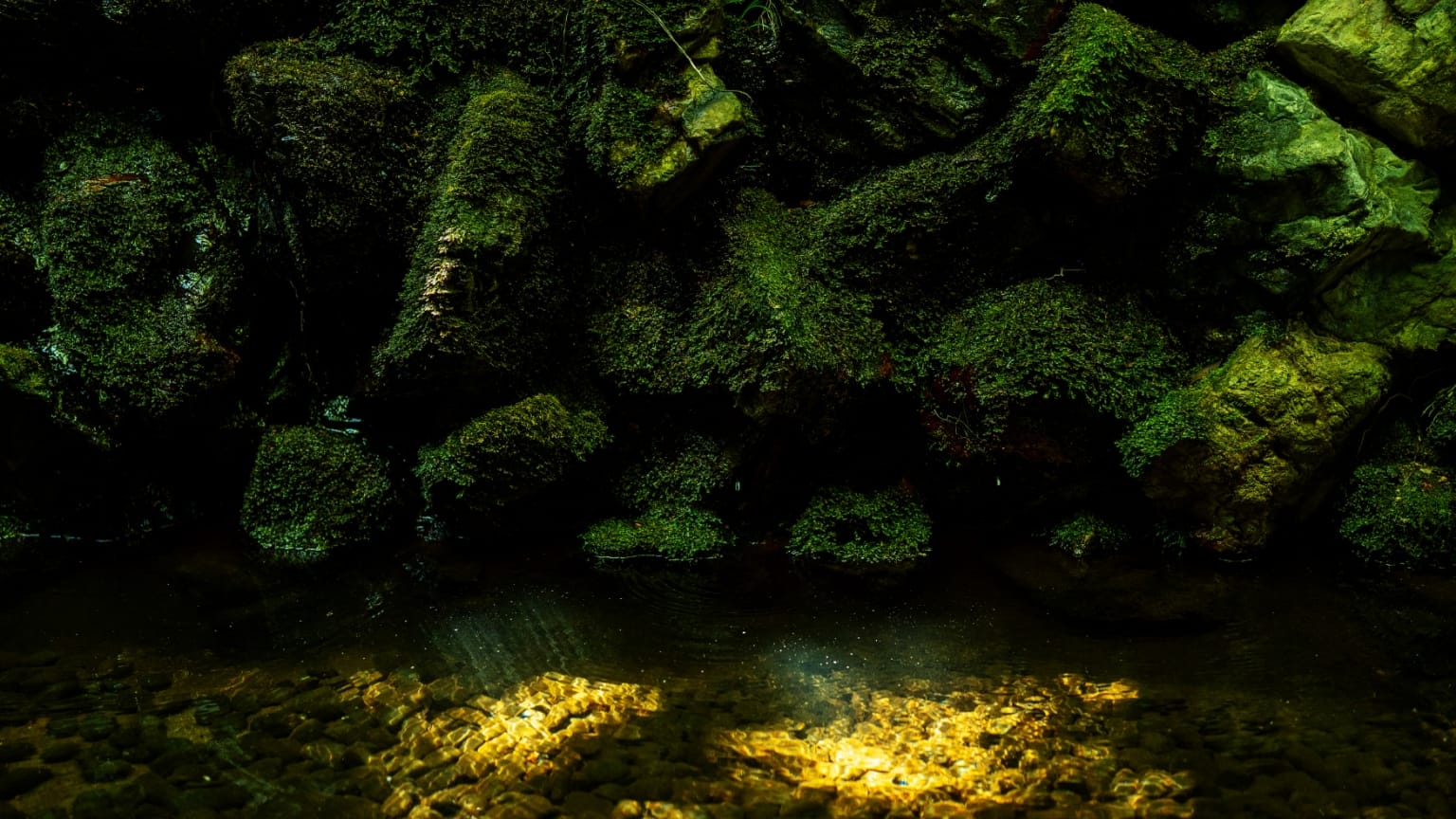
石の樋を伝って湧き水が流れ落ち、しっとりと苔が濡れた庭。池には鯉の姿が。
Spring water trickles down the stone gutters, moistening the garden moss. Koi carp can be seen in the pond.
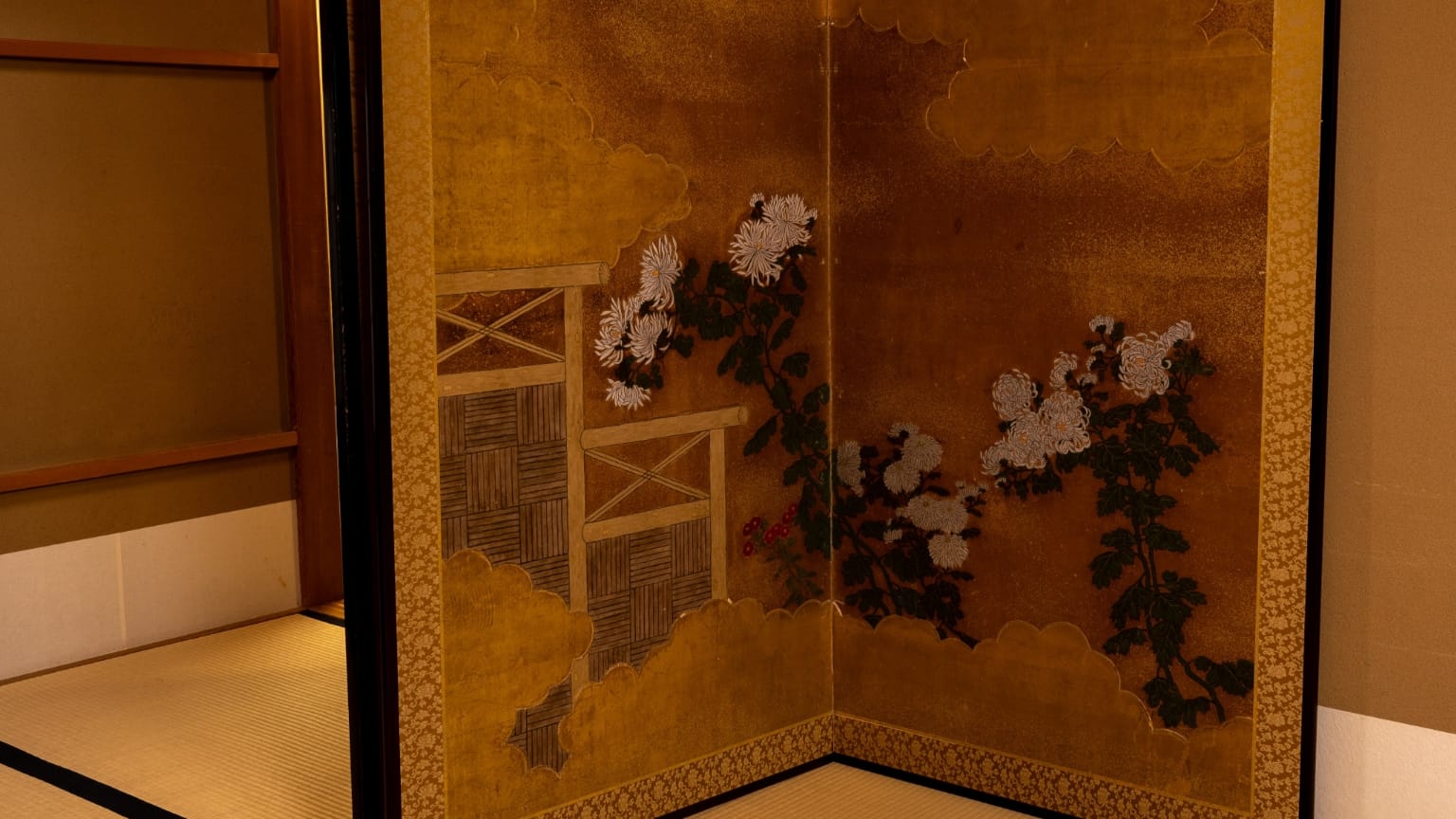
尾形光琳らしいダイナミックな構図で、大輪の白菊を描いた屏風。
A byobu folding screen depicting large white chrysanthemums in a dynamic composition typical of the Japanese painter, Ogata Korin.
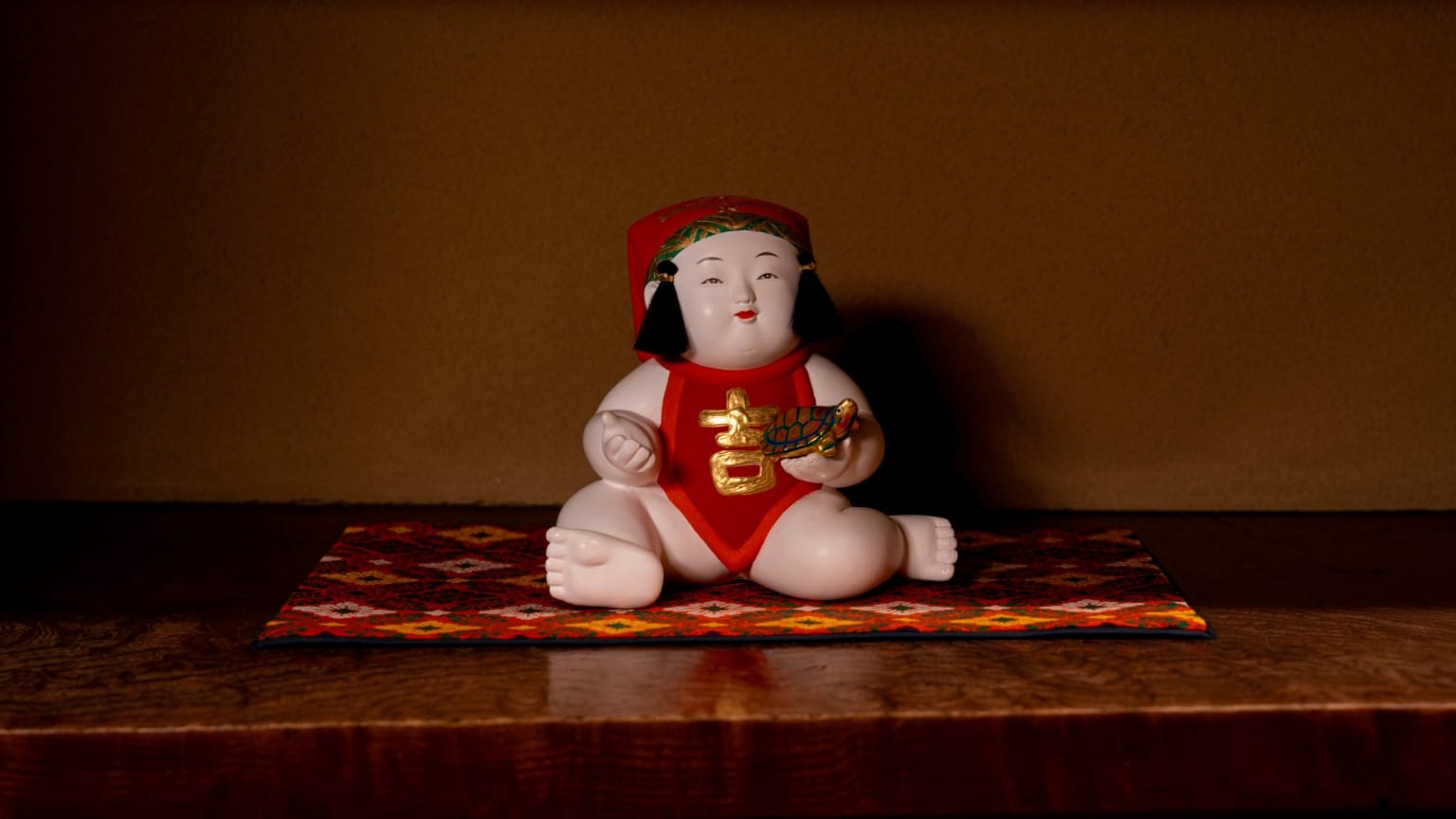
五世島田耕園の御所人形。季節や年中行事に応じて持ち物が変わります。
Gosho Ningyō (literally ‘palace dolls’) created by the fifth-generation successor of the Shimada Koen family. The items the dolls hold in their hand is changed with the seasons and in accordance with annual events.
